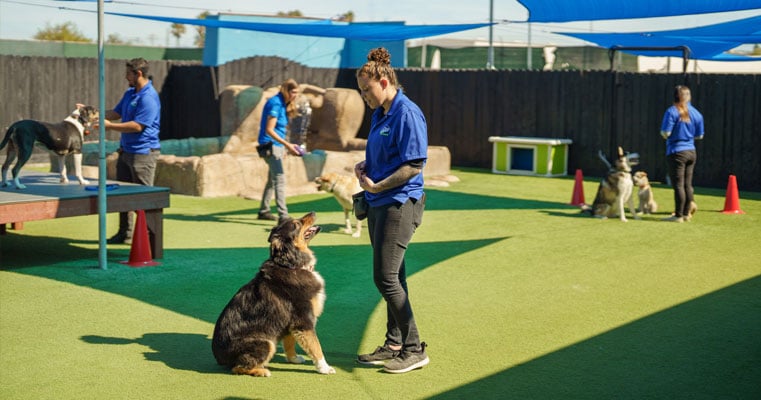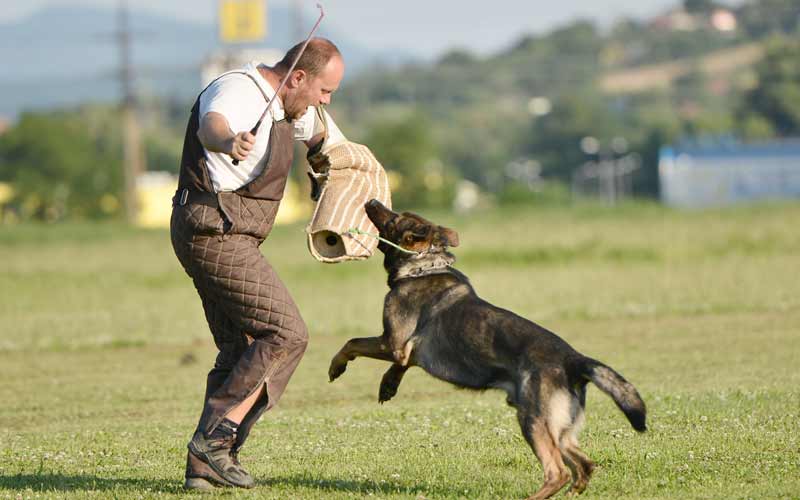Exactly How to Include Games right into Your Dog Training Routine
Exactly How to Include Games right into Your Dog Training Routine
Blog Article
Essential Tips for Effective Dog Training: An Overview for Pet Dog Owners
Reliable pet dog training is a complex procedure that requires a critical strategy customized to both the pet's personality and the proprietor's goals. Key components such as developing consistent commands, utilizing favorable support, and helping with early socializing play vital functions in cultivating a well-adjusted canine buddy. Several pet dog proprietors come across obstacles that can impede progress, leading to aggravation and unpredictability. Recognizing how to browse these obstacles can dramatically enhance the training experience, ultimately changing the connection in between owner and dog. What are the essential strategies that can be used to ensure success in this undertaking?
Recognizing Dog Behavior
Recognizing pet dog actions is important for effective training and promoting a harmonious connection in between canines and their proprietors. dog training. Pets communicate largely via body language, articulations, and activities, making it critical for proprietors to analyze these signals precisely.

Socializing plays a substantial function in canine habits; exposure to various environments, people, and other pets can substantially affect a canine's character. Factors such as breed features and specific temperament should assist training techniques, as some breeds may have specific behavior characteristics that demand customized methods. By understanding these aspects, proprietors can develop a helpful atmosphere that motivates positive habits, leading to successful training outcomes and a much deeper bond with their animals.
Establishing Constant Commands
Effective interaction with your dog begins with establishing constant commands. This fundamental aspect of training is crucial for promoting understanding between you and your pet dog. Consistency in the commands you utilize ensures that your pet dog can dependably link particular words or expressions with the preferred behaviors.
When choosing commands, choose clear, unique words that are easy to set apart and say from each other. Avoid using similar-sounding commands that might puzzle your pet. For example, making use of "rest" and "remain" is proper, however "sit" and "struck" can lead to misconceptions.
Furthermore, keep the exact same tone and volume for every command. Canines are sensitive to singing signs, so varying your tone can create complication.
It is similarly essential to make sure that all relative are on the exact same web page relating to the commands used. A united front in command use will certainly stop combined signals and strengthen the knowing procedure.
Positive Reinforcement Techniques
The power of favorable support in canine training exists in its ability to motivate wanted behaviors with rewards and appreciation. This method is grounded in the principle that actions followed by positive results are more probable to be duplicated. By including positive support right into your training regimen, you can properly form your pet's behavior in a positive way.
To carry out favorable support, it's necessary to determine what encourages your canine, whether it be deals with, toys, or spoken praise. When your pet does a desired activity, such as remaining on command, quickly reward them with a reward or love. This association in between the command and the positive result strengthens their understanding.
It's vital to timing the incentives properly; providing the support within secs of the wanted actions assists your dog make the link (dog training). Furthermore, consistency is essential-- make sure that all relative use the same commands and incentive systems to prevent confusion
Progressively, you can lower the frequency of treats as your visit their website pet dog discovers the actions, transitioning to praise or recurring incentives. This method not only promotes a strong bond between you and your pet dog but also advertises a positive knowing setting, making educating an enjoyable experience for both.
Socialization and Communication
Continually exposing your pet to a selection of settings, individuals, and various other animals is crucial for their social development. Socialization needs to begin early, preferably throughout the vital home window of 3 to 14 weeks, when pups are most receptive to new experiences. Older pet dogs can likewise benefit from ongoing socializing initiatives.
Present your dog to various setups, such as parks, pet-friendly shops, and metropolitan areas. This exposure aids them adapt to various stimuli, reducing stress and anxiety and fear reactions. Urge positive communications with other pet see page dogs and individuals, making certain that these experiences are controlled and risk-free to promote confidence.
Make use of structured playdates with courteous pet dogs, as this can boost your pet dog's social abilities and instruct them ideal actions. Obedience classes and training sessions also offer excellent chances for socialization, allowing your dog to interact with others in a monitored environment.
Monitor your canine's body language throughout interactions, as this will certainly aid you determine their comfort degree. Progressively boost exposure to more difficult situations while guaranteeing that each experience declares. A well-socialized pet is extra most likely to show well balanced actions, making them a joy to have in any type of setting.
Resolving Usual Training Obstacles
Every pet dog owner will run into training challenges at some point, regardless of their dog's age or socializing degree. Identifying common concerns such as stubbornness, interruptions, and fearfulness can help in developing reliable methods for improvement.

Gradually present interruptions as the pet comes to be much more proficient in commands. Short, regular training sessions are also effective in maintaining focus.
Terror can prevent a dog's learning process. Steady desensitization use this link to the resource of worry, paired with favorable support, can aid reduce anxiousness. Patience is vital; never ever force a canine right into a situation that triggers distress, as this may worsen the concern.
Inevitably, understanding and addressing these typical challenges with a structured technique will foster an extra productive training experience, reinforcing the bond between canine and proprietor while advertising reliable knowing.
Conclusion
In summary, effective pet training counts on an extensive understanding of canine behavior, the establishment of constant commands, and the application of positive reinforcement methods. Socializing plays a critical function in establishing well-adjusted pets, while addressing usual training challenges calls for persistence and versatility. By executing these crucial methods, pet dog proprietors can promote a strong bond with their pets and advertise preferable behaviors, eventually leading to an unified partnership in between people and their canine friends.
Understanding pet dog behavior is important for reliable training and cultivating a harmonious connection between canines and their owners.Socializing plays a substantial role in pet dog actions; direct exposure to various atmospheres, individuals, and various other pets can dramatically impact a pet dog's temperament.The power of favorable reinforcement in pet dog training lies in its capacity to motivate wanted habits with incentives and praise. By integrating favorable reinforcement right into your training routine, you can properly shape your dog's habits in a constructive manner.
In summary, successful dog training counts on a comprehensive understanding of canine actions, the facility of regular commands, and the application of positive reinforcement techniques.
Report this page